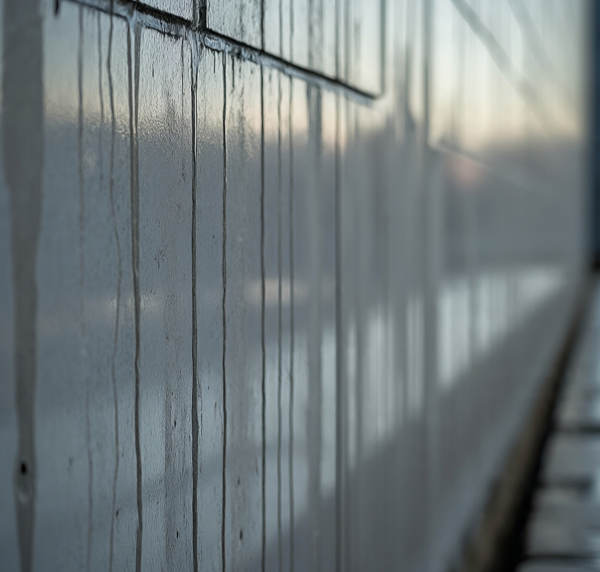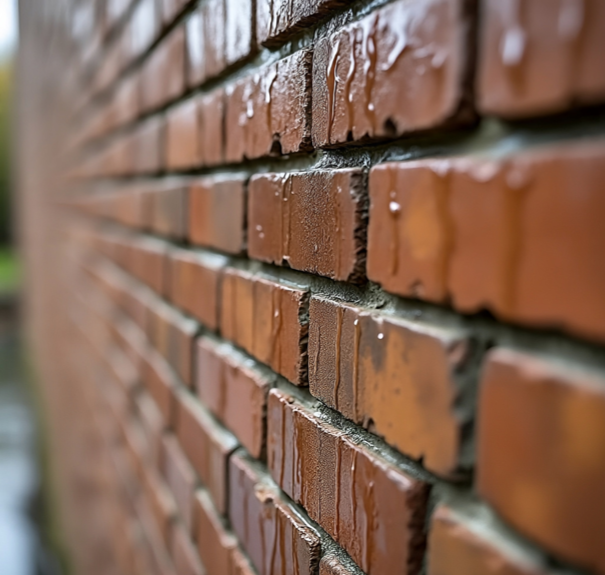Summary
Water damage behind walls can go unnoticed for weeks or even months, leading to mold, structural decay, and major health risks. This guide teaches you how to spot early warning signs like musty odors, discolored paint, or warped drywall. We also cover how to choose the most reliable local water damage restoration company that can handle everything from inspection to full repair, mold removal, and long-term prevention.

Real-Life Story: “We Thought It Was Just Peeling Paint—Until Our Wall Collapsed”
The James family had just finished repainting their hallway when they noticed some bubbles forming under the new coat. Thinking it was just leftover moisture from the paint job, they ignored it. But the small blemish soon became a patch of discoloration, then a warped section of drywall.
One night during dinner, part of the hallway wall caved in. Inside was a shocking sight: black mold colonies, decayed insulation, and a long-slow plumbing leak they never knew existed.
What started as an aesthetic issue became a full-blown health and safety hazard. Their insurance only partially covered the repairs, and they had to live in a hotel for two weeks while their home was treated. The lesson? Don’t wait to investigate the small signs.
What Is Hidden Water Damage?
Hidden water damage occurs when water infiltrates parts of your home you can’t immediately see or access, such as:
- Behind walls
- Under floors
- Inside ceilings
- Around HVAC systems or ducts
Foundation cracks allowing groundwater seepage
- Leaky plumbing lines or faulty appliances
- Roof leaks during storms
- Flooding that wasn’t properly dried
- Condensation buildup from poor ventilation
- Foundation cracks allowing groundwater seepage
Unlike visible water damage (like puddles or stains), hidden damage can quietly grow worse over time, causing:
- Structural weakening (rotted wood, sagging drywall)
- Mold and mildew growth
- Electric shock risks if wiring is compromised
- Long-term air quality issues
How Can You Tell If Your Walls Are Hiding Water Damage?

Detecting hidden water damage early is crucial. Here’s how to use your senses to identify potential issues:
Visual Signs:
- Bubbling or blistering paint
- Yellow, brown, or copper-colored stains
- Peeling wallpaper
- Cracks or warping in drywall
- Mold or mildew at wall joints or baseboards
- Sagging ceilings or wall panels
Smell:
- Musty or earthy odors that worsen in humidity or after rain
- Odors that linger even after deep cleaning
- Smells strongest near windows, bathrooms, or basements
Touch:
- Soft or damp drywall when lightly pressed
- Cooler wall spots that don’t match room temperature
- Warped surfaces underneath wallpaper or paint
Sound:
- Dripping or trickling sounds behind walls when no taps are running
- Creaking or popping noises from drywall or floorboards
- Buzzing or hissing from leaky pipes
Should You Test for Moisture Behind the Walls?
Yes, especially if you’ve experienced recent leaks, storms, or plumbing issues. Moisture testing can confirm suspicions and prevent unnecessary demolition.
Testing Methods:
- Moisture meters: Detect moisture levels in drywall or wood.
- Infrared thermal cameras: Identify temperature variations caused by dampness.
- Professional moisture inspection: Restoration companies can provide detailed diagnostic scans.
Why Ignoring Hidden Water Damage Is Dangerous

Failing to act quickly can result in major risks:
| Consequence | Description |
|---|---|
| Mold Growth | Starts within 24-48 hours, can cause respiratory issues. |
| Wood Rot | Weakens studs, beams, subfloors. |
| Structural Damage | Leads to collapsing walls, ceiling failure. |
| Electric Hazards | Can cause short-circuiting and fire risk. |
| Pest Infestation | Damp areas attract rodents, termites, and ants. |
| High Repair Costs | Early fixes are cheap; delays increase restoration bills. |
When Should You Call a Water Damage Restoration Company?
If you notice any combination of the signs mentioned earlier, don’t delay. Time is critical.

Call a professional if:
- There’s visible mold or musty smells
- Drywall feels soft or spongy
- Your home experienced recent flooding or leaks
- You hear dripping inside walls
- Your ceiling is sagging
How to Choose the Best Water Damage Restoration Company Near You
Here’s what to consider before hiring anyone to tear into your walls:
1. Are They Certified and Insured?
Ensure the company has:
- IICRC certification (industry gold standard)
- State/local business licenses
- General liability insurance and workers’ comp coverage
2. Do They Offer 24/7 Emergency Services?
Water damage can worsen within hours. Choose a team that:
- Answers the phone after hours
- Can be onsite quickly
- Works weekends and holidays
3. Do They Handle Insurance Claims?
The best companies can:
- Work with your insurance provider directly
- Provide documentation and photos
- Offer support with claim filing
4. What Do Their Reviews Say?
Search their name on:
- Google My Business
- Facebook local pages
- Better Business Bureau (BBB)
- Nextdoor and Yelp
Look for real stories about their professionalism, speed, and follow-up.
5. Do They Offer Full-Service Restoration?
A great company doesn’t just dry your home. They:
- Remove damaged materials
- Kill mold with antimicrobial treatment
- Replace drywall, insulation, and flooring
- Paint and restore the affected area
How to Find Water Damage Pros Near You
Search these key phrases in Google or Bing:
- “Best water damage restoration near me”
- “Emergency water damage cleanup [your city] (in Indiana for example)”
- “Mold remediation and water damage [zip code]”
Use map listings to compare reviews, certifications, and availability. For immediate assistance with water damage restoration in Indiana, contact PuroClean Disaster Restoration, Call (317) 467-4436.
PuroClean Disaster Restoration has over 19 years of experience in the water damage restoration industry, with over 100 five Star reviews on Google serving Indianapolis. Click on this link to see it’s online reviews and ratings.
Common FAQs The Signs of Water Damage
Q: What are early signs of hidden water damage?
A: Bubbling paint, soft drywall, musty smells, and warped floors are all red flags.
Q: Should I try fixing water damage behind walls myself?
A: Minor surface moisture can be DIY, but internal leaks and mold need a professional.
Q: How soon does mold form after water damage?
A: Mold begins growing in as little as 24 to 48 hours.
Q: What qualifications should a restoration company have?
A: Look for IICRC certification, insurance, good reviews, and emergency response.
Q: Is water damage covered by homeowners insurance?
A: Usually yes, if caused by sudden events (burst pipe), but not for long-term neglect.
Final Thoughts: Don’t Let Your Walls Keep Secrets
Walls may be silent, but they leave clues. The sooner you notice them, the faster and cheaper your recovery will be.
The James family’s story is a cautionary tale. Don’t ignore peeling paint, strange odors, or odd wall textures. If something feels off, trust your instincts and get a professional evaluation.
And when choosing a water damage restoration partner, choose one with proven experience, strong local reviews, and the tools to do it right.
Bonus: Prevent Water Damage Before It Starts
| Preventive Action | Why It Matters |
| Install leak detectors | Catches slow leaks before they cause damage |
| Check your roof annually | Prevents rainwater intrusion |
| Seal grout and caulk | Keeps moisture from seeping into walls |
| Inspect plumbing every 6-12 months | Avoid burst pipes and slow drips |
| Use a dehumidifier | Controls basement or attic humidity |


 PuroClean Disaster Restoration
PuroClean Disaster Restoration